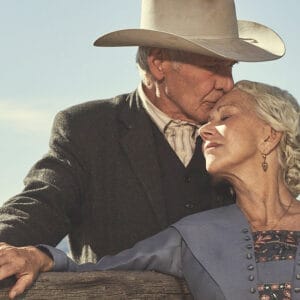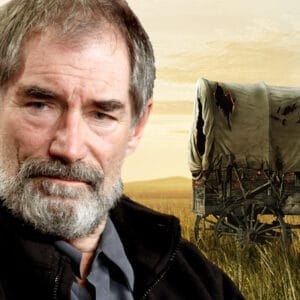Last Updated on June 3, 2024
For over a decade, Roger Moore had the task of living up to everything that Sean Connery had put in place as 007. And while some will defend Moore forever, we can’t forget the clown costumes, slide whistles, gondola chases, and so much more that pushed James Bond into an uncharted level of ridiculousness. Perhaps all of this could have been prevented had Timothy Dalton not been so green, turning down On Her Majesty’s Secret Service because he was in his mid-20s. That’s all hypothetical, of course, but Timothy Dalton would go on to reinvent James Bond in a way that may not have sat with contemporary audiences but marked a true challenge for what it meant to carry the torch. Dalton played 007 just twice; and with that, we’d challenge you to name just as many worthwhile post-Bond movies from the underappreciated actor (who we’re huge fans of – as shown on our long-running James Bond Revisited).
Let’s find out: WTF Happened to… Timothy Dalton?
But to truly understand what happened to Timothy Dalton, we go back to the beginning. And the beginning began when he was born on March 21st, 1946 in Colwyn Bay, Wales. Dalton fell in love with the craft – at least as it is on stage – as a teen, primarily through a production of Macbeth. That’s quite a traditional way to fall in love with theater, no doubt matched by his taking up acting interests with London’s National Youth Theatre and studies at the Royal Academy of Dramatic Art. Yet he would never finish there, saying his educators were “oppressive” sorts.
Dalton landed his first stage gig in London with, yes, the work of Shakespeare, 1964’s Coriolanus. He, too, through the ‘60s and ‘80s, would be linked to Shakespeare better than any other author… well, almost. Look at this list of Shakespearean productions he took part in and you’d be pressed to think of even a handful that are missing: The Merchant of Venice, Richard III, King Lear, Henry V, Romeo and Juliet, Macbeth, Antony and Cleopatra, Love’s Labour’s Lost, As You Like It… There, too, was an early go at the title role of Little Malcolm and His Struggle Against the Eunuchs in London and, what stands as his most recent go at the stage, a key role in the first production of His Dark Materials (2003-2004).
Such performances would help him get his start on TV, playing in the Malcolm McDowell series Sat’Day While Sunday (1967), as well as 1970 and 1971 episodes of the BBC anthology series Play of the Month (in adaptations of Shaffer and Shaw) and his introduction to American television, the 1978 miniseries Centennial, in which he played an explorer.

Dalton, too, would make a marked debut on the big screen, playing Philip II of France in 1968’s The Lion in Winter opposite Katharine Hepburn and Peter O’Toole, a job made possible at the recommendation of the latter, high praise for an up-and-comer.
Enter 007
But the biggest – and most foretelling – opportunity came when he was asked to audition for On Her Majesty’s Secret Service (1969) to take over the role of 007 James Bond from Sean Connery. But there was only one person standing in the way of Timothy Dalton, a massive fan of Ian Fleming’s books: Timothy Dalton. See, he thought he was too young for the part. He had another reason entirely when he turned down the role when 1981’s For Your Eyes Only came around: the series had been relying too much on comedy.
Dalton’s dislike for this variation of James Bond would be evident when he finally signed on for The Living Daylights (1987). But this one only worked out of circumstances surrounding the guy who was lined up first: Pierce Brosnan, whose Remington Steele contract kept him at bay. Timothy Dalton is never ranked as the best Bond but he felt like such a natural in his introduction, challenging both himself and 007 by removing the character from his “role model” status and helping move the franchise in a new direction. Unfortunately, the box office numbers were barely better than Moore’s final outing (1985’s A View to a Kill), topping out at $51 million domestically.
Numbers would be even lower for 1989’s Licence to Kill, whose $35 million was the worst Bond haul since the mid-70s. Despite his attempts to freshen up Bond – and even balance his tenure with lighter fare, like Hawks (1988), a sleazy comedy where he played a cancer patient looking for one last fit of fun – Timothy Dalton’s spin was a turn-off for contemporary audiences, especially compared to the cheeky Roger Moore. Instead, they got a straighter, rougher, and far less humorous 007, the sort of steel that would set the stage for Bonds of the future. And speaking of which…

Timothy Dalton actually had a three-contract deal but lawsuits between Eon and MGM related to rights halted it. By the time things were resolved in 1992, it had been too big of a gap for Dalton, even if the studios wanted him to sign on for another multi-picture deal. And so while Pierce Brosnan would take advantage of this just as Dalton had the Remington Steele ordeal, Timothy Dalton could redirect his attention, leaving behind just two performances as James Bond.
Between initially turning down Bond and, well, turning down Bond again, Timothy Dalton appeared in a trio of 1970 films: Wuthering Heights as Heathcliff, Prince Rupert in Cromwell and Italy’s The Voyeur, following that up with 1971’s Mary, Queen of Scots, playing Henry Stuart, Lord Darnley, displaying an active interest in historical dramas. He would land a role as a civil servant in 1975’s Permission to Kill (also foreseeing his Bond career, in title only) while continuing to hone his stage work. Dalton wrapped up the ‘70s with a diverse trio of films: Sextette (1978), in which he played the husband to Mae West in her comeback/final role; Juan Ciudad biopic The Man Who Knew Love (1978); and Agatha (1979), playing Agatha Christie’s husband (he would later appear on TV’s Agatha Christie’s Marple in 2006, showing his admiration for yet another English scribe).
Dalton got to loosen up quite a bit as Prince Barin in a delightfully hammy turn in Flash Gordon (1980), before playing yet another second fiddle lover, this time to Marie-France Pisier’s Coco Chanel in Chanel Solitaire (1981). He would follow this up as Rochester in the 1983 miniseries adaptation of Jane Eyre, Hallmark Hall of Fame movie The Master of Ballantrae (1984), dreadful gothic horror The Doctor and the Devils (1985), and TV movie Florence Nightingale.
Post Bond
This was all in his pre-Bond days. But what would he do now that he had holstered his Walther PPK? First came something he had grown accustomed to: the costume drama, playing House of Savoy head Vittori Amedeo II in The King’s Whore (1990). Next, he would truly give himself a challenge by playing actor/Nazi Neville Sinclair in The Rocketeer, which sees him as some of the most fun he’s ever been on the screen.

He continued through the ‘90s with a string of works that range from campy (a werewolf hunter in a 1992 episode of Tales from the Crypt) to against type yet ultimately safe (a criminal on short-lived BBC series Framed) to forgettable (1993 rom-com Naked in New York; 1996 family flick Salt Water Moose) to back-to-the-well miniseries (Rhett Butler in 1994’s Scarlett) to getting dragged into the attempt to make Fran Drescher a movie star flop The Beautician and the Beast. There was also a lot more television: Showtime’s The Informant (1997), HBO’s Made Men (1999), period piece The Reef (1999), and ABC miniseries Cleopatra (1999), landing the role of Julius Caesar.
Really, by the time the smoke had cleared on Timothy Dalton’s tenure as Bond, people just wanted the opportunity to attach a once-big name onto their low-level project. That’s how he ends up in crap for Fox Family (2000’s Time Share) and Showtime (Possessed), and how he gets a small role in forgettable westerns like American Outlaws (2003) even if the role of real-life antagonist Allan Pinkerton sounds alluring). And how he plays Brendan Fraser’s abducted father in Looney Tunes: Back in Action (2003) and is the biggest name in a shitty TV production of Hercules (2005).
At least he was fun in 2007’s Hot Fuzz as a villainous supermarket head, but that’s only because Edgar Wright had respect for him. But that’s the only time Timothy Dalton gets anything chewy: when those who cast him actually admire him as a presence and not just a former James Bond: consider his terrific turn on Doctor Who as the Time Lord founder in the two-part “The End of Time” (2009) or his compelling arc on Chuck (2010). But his most pure rebirth came as a character who is probably more Timothy Dalton than we might expect: Toy Story’s Mr. Pricklepants, playing the always-on hedgehog toy to perfection – and in two movies and numerous shorts. (His other voice outings in Tinker Bell movies, Tangled adaptations, and Faerie Tale Theatre are far less impressive.)
For the most part, at this point, Timothy Dalton has crawled from his post-Bond slump. It’s likely he won’t be the lead ever again, but if he can find the fun (2010’s The Tourist; his go as Niles Caulder on DC’s Doom Patrol) or the meaty role (Peter Townsend on The Crown; Yellowstone spin-off 1923) then he’s golden. Because he knows – and we know deep down – that he’s far more than just Bond, James Bond.




















Follow the JOBLO MOVIE NETWORK
Follow us on YOUTUBE
Follow ARROW IN THE HEAD
Follow AITH on YOUTUBE